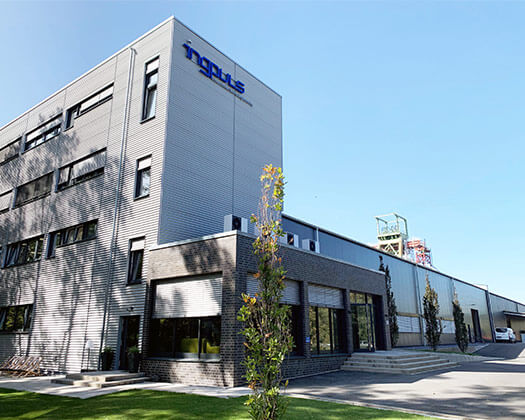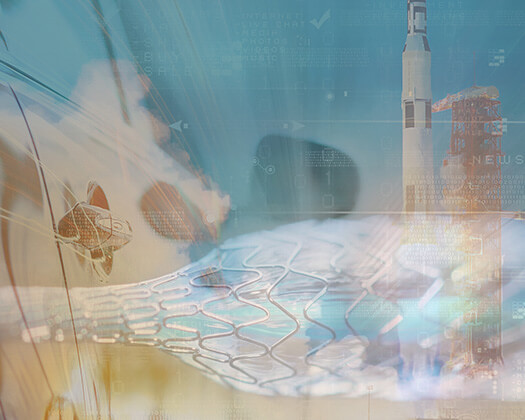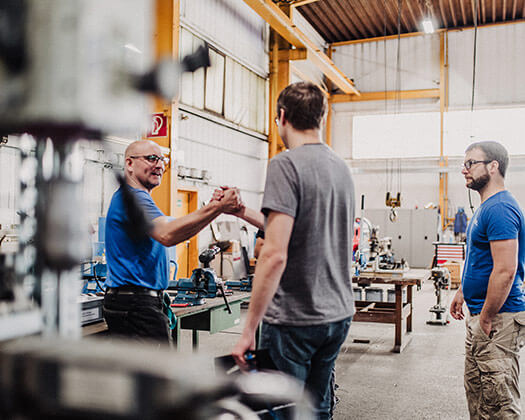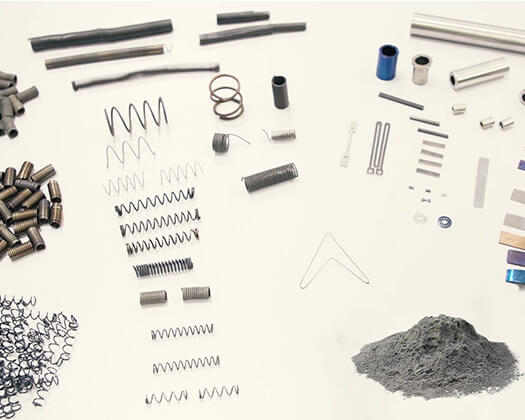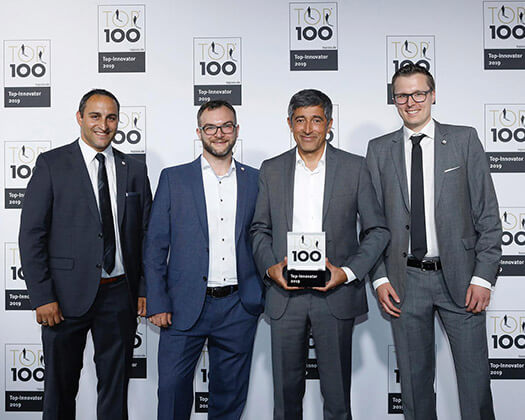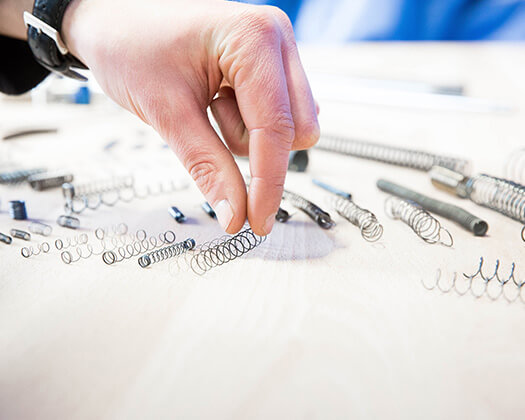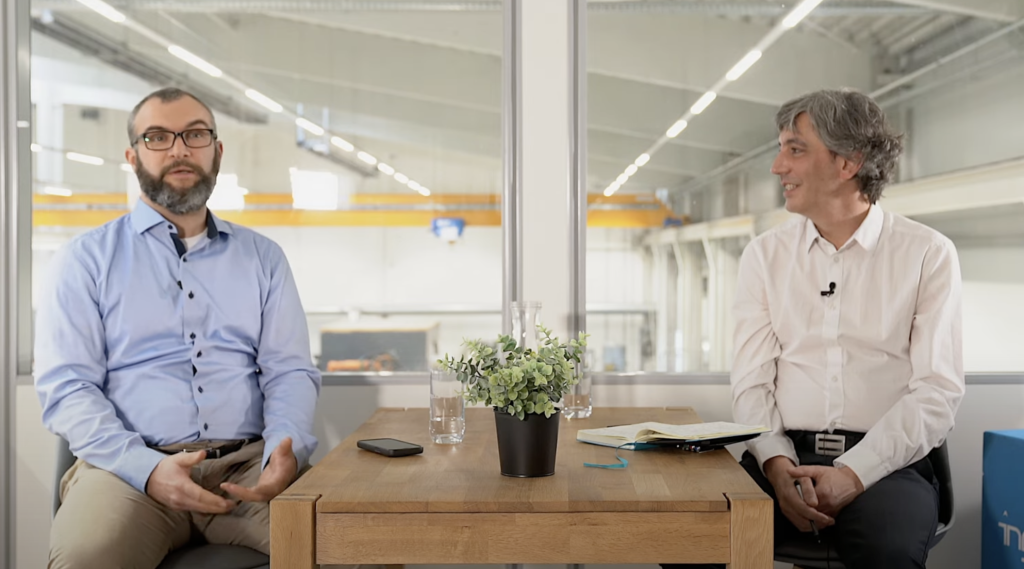Ingpuls Smart Shadings: Intelligent shading solutions based on shape memory alloys
The second episode of Ingpuls Insight Talk is about the new spin-off Ingpuls Smart Shadings. In a joint conversation, CEO Dr. Burkhard Maaß and Co-Founder Dr. Miguel Callejas give an insight into the genesis of Ingpuls Smart Shadings and the idea behind it. How did the idea of intelligent shading solutions actually come about, what challenges had to be overcome in the process, and what are the next steps for Ingpuls Smart Shadings?
Burkhard Maaß and Miguel Callejas talk about the products of Ingpuls Smart Shadings and the future plans of the young company, which develops and produces intelligent shading solutions based on shape memory alloys.
Burkhard Maaß: I’m Burkhard Maaß. I’m a materials scientist and one of the founders and CEOs of Ingpuls and Ingpuls Smart Shadings.
Miguel Callejas: My name is Miguel Callejas, I’m a Spanish architect and the Creative Director of Ingpuls Smart Shadings.
What exactly is Ingpuls Smart Shadings?
Burkhard Maaß: Ingpuls Smart Shadings is a spin-off or subsidiary of Ingpuls GmbH. At Ingpuls we produce and develop shape memory alloys and actuators. In the Ingpuls Smart Shadings spin-off, we develop and produce shading solutions based on shape memory alloys.
Where can the shading solutions of Ingpuls Smart Shadings be used?
Miguel Callejas: We can use these shading solutions wherever shade is needed, as a thermal comfort. This can be outdoors or indoors. Outdoors, the solutions can be used, for example, in streets, public spaces, squares or parks. Indoors, i.e. in buildings, the solutions can also be used, e.g. on terraces or in open spaces on the facades of buildings. Another outdoor application example: in the south of Spain, there are many shopping streets where shading solutions are also used. This allows people to escape the hot weather and store in peace. This shows that the number of these applications keeps growing.
How did the idea for Ingpuls Smart Shadings come about?
Miguel Callejas: It all started on a hot summer day in Seville in the south of Spain, where I was working at the time. There, people were using these shading solutions to provide shade over the shopping streets. While I was working, I thought to myself, “okay, this is really a cool idea”! When I went back to the same street in the evening, these – we call them “Toldos” in Spain – shading solutions were still open. At night, when they are actually no longer needed. And then I started thinking about moving architecture. Architecture is usually very static. At that time I was also looking for new material, researching new ideas and other things. Then I found shape memory alloys and I thought this is the perfect material for systems like that. I started reading articles, watching videos and getting material and then, to get some samples of the material, I sent an email to a nice company in Germany and this is when I wrote an email to Burkhard. After this something really funny happened.
Burkhard Maaß: So the story on our side: I am sitting in my office in Bochum and I get an email from a Spanish architect from Sevilla but he writes me in English and I thought, “hey this guy surely speaks Spanish” and so I answered him in Spanish. Part of this story starts a little bit earlier – in 2005 I went to live in Sevilla and to study there for a year – and when I got his mail I immediately knew what he was talking about because I knew the Toldos, I knew Sevilla, I knew the weather and I knew shape memory alloys and it just clicked and I knew what he was about to do …
Miguel Callejas: He replied in Spanish! And I was like – “wow, this cannot be, this is incredible”!
Burkhard Maaß: I know where you live, I know your street and everything. This was really cool and we started – since I didn’t know what he wanted to do and we wanted to make the system work. He was looking for spring actuators but so far, he had just bought them from online stores where you always just get short springs, but he wanted to make more displacement, so I just started to make this piece by piece – an actuator here, an actuator there – so that he could produce his prototypes. We didn’t have any funding or anything and at first, we didn’t know that he was not from a company. We said, “do you want to make this an RD project (research & development), it costs this much…”. But then he said, “I am just a PhD architect and I don’t have any funding”. He made his prototype and his thesis in 2016 …
Miguel Callejas: … at that time I was working on my thesis. Then I actually asked Burkhard if he could come to be part of the members of the thesis jury…
Burkhard Maaß: … and we met there for the first time. Up to then we just had made video calls – and that was 8 years ago. At this time it was not that common. We still had to use skype and this old software, but it worked so we got to know each other…
Miguel Callejas: Burkhard told me, that need to continue this. Maybe we could ask the German Government for money – and that’s what we did.
Burkhard Maaß: We wrote a proposal for a ZIM Project (Central Innovation Program for SME´s) together with the University, with the Chair of Materials Science. After some time, it finally got approved. This has been in 2018 when the project started. Miguel just packed his stuff into his CVR, into his old Renault Megan …
Miguel Callejas: … I got into my car and drove to Germany 2,500 km…
Burkhard Maaß: This was really amazing and for us really impressive because who would do that? Who would make such a decision to pack your stuff and move to another country where you have never been before?
Miguel Callejas: If you believe in something – you go for it! I was so lucky to find them here – there are such nice guys. They know the material, they got the technology and I am in the best place possible to be in…
Burkhard Maaß: This is where we are today.
Miguel Callejas: This is our story.
What challenges have you faced in developing shading solutions based on shape memory alloys?
Burkhard Maaß: Every day new challenges arise. In the early stages it was just a naive understanding of an architect and not a material scientist. He sees this material and thinks “I can just do this”, but the real world brings up some little details of the actuators. If you activate them once and again and again, they will have some sort of functional fatigue which is known but brings some issues of how to install this. For example installing the system between two walls. The effect is not big, if you think of the additional length on a spring actuator, but if this actuator is several meters long, it is a significant length. This is where obstacles, design and technical issues can occur. Miguel’s idea was a system that automatically opens in the morning and closes at night. The way that shape memory alloys work, is that you have one transformation from martensite to austenite when you heat up and you have another one from austenite to martensite when you cool down. For that you have a hysteresis – both transformations do not happen at the same temperature range. When we looked at weather data, we learnt, that the actual difference in the streets is not big enough – even for our small hysteresis alloys – so this won’t work without a little bit of help. Then we started to look into other solutions – what do we have to do? We found out that heating up is something that we can help artificially by additional elements but cooling down is something that is really hard. So we started to develop an alloy that would cool down at the right temperature in the evening and then having the heating up part at elevated temperatures with an additional element.
Miguel Callejas: Exactly. At this point I would like to highlight that for me the mix of Spanish architects and German engineers is really interesting. Burkhard knows this material very well. He knows all the technical aspects and he guided me in the right direction and limits – we are a good team.
Burkhard Maaß: Of course, these were just the alloy challenges. Then we have system challenges where you can have friction. It breaks, not as in breaking apart, but taking away speed. And there are always some little mechanical things that should move but don’t move. All these things we have to solve step by step. Apart from the technical challenges you have, of course, organisational challenges. Firstly, do we get the grant or not? Can we write the proposal and will it get granted? All these challenges will need to be overcome. Moreover, we want to make a system that is 3 m x 3 m –where do we put it? We don’t have enough space because that was in the days where we just had our garage office. For this case Miguel invented a whole system that could be lifted off the wall after working hours. These are all things that need to be worked out. Also, the impact of the development from Ingpuls itself was sometimes a challenge, because when we started out it was 2014 – we were just a handful of people in the company – and while we were writing the grant proposal for the ZIM project Ingpuls got its first automotive contract and we had to set up our production line. This took up most of my time and I couldn’t always have the time and energy to focus on Smart Shadings. But these are things that we have learnt to cope with.
Miguel Callejas: We had a lot of problems and difficulties in the past – we still do, our journey is not finished – but we have learnt a lot and this knowledge is something that we made, we take with us and will surely be useful for the future. At this point we are happy – again, we learnt a lot and will continue learning and hopefully we will achieve a good result.
Burkhard Maaß: The important thing – just talking about challenges in the past and challenges that we have overcome – we have now a validated prototype that has already demonstrated more than 10 years of service life. We know that the system really works and this is something the entire team can be proud of. I believe it might be the longest SMA actuator ever made – I am not sure and won’t take it to the Guinness Book of Records – but it is rather long actuator working for meters and meters and we have calculated that one single point of this actuator has already run a marathon!
Miguel Callejas: A couple of them! Two marathons! It’s really exciting, yes!
What are the advantages of shading solutions based on shape memory alloys?
Miguel Callejas: We are noiseless, we are faster than conventional systems, we have a system that is lightweight, and we don’t need extra space. In a normal system you need a motor – big or small – but you need a space to hide it in. You can integrate our system easier as it’s smaller, so you don’t see anything apart from the textile moving. But you don’t see how it’s moving – it has a bit of a magic component, and we love that.
Burkhard Maaß: Of course, it’s not magic – it is material science. The good thing is – as Miguel says – that it is lightweight and smaller, and it doesn’t have such a big impact on the building structure. We don’t need any supporting structures or drill holes in the wall of the building. It is much lighter and more elegantly designed. Another thing we have not mentioned before is, that we produce two kinds of systems. One is an active system which is activated by electricity, you can control it with an app, open and close it whenever you want to – for that you need a source of energy. The other system is the passive system where we just use the heat of the sun. There you don’t need cables; you don’t need anything to control it – it will just open and close when there is sun or when there is no sun anymore. These are perfect for open spaces, public spaces, where you don’t want the maintenance – where you just install the system and it all works by itself.
Miguel Callejas: Exactly. I would add that the passive system is a really smart system in the sense that the material itself feels the sun. We don’t have sensors or any other motors in a separate part, the shape memory alloy itself has all the functions together. So it is a really smart system and the passive system can be controlled by the user and is perfect for private spaces in your garden or your building. The passive system is perfect for the public space to be used in streets and squares. They don’t need to be activated and deactivated every day and they don’t need maintenance – very good for public spaces.
What contribution can shading solutions offer in terms of sustainability?
Burkhard Maaß: Sustainability – the word is all around us and you hear it everywhere. What is our impact on sustainability and using less energy? If you have a building or a space in the sun, it will heat up. If you want comfort, you need air conditioning to cool the building down and this takes a lot of energy. We think it is smarter to prevent the building from heating up in the first place by closing the windows and by creating shade. If the building is not heated up, you need less energy to cool it down again. This is one aspect. The second aspect is, if we take our passive systems, we don’t need additional energy to create the shade as the system will close by itself. You have to think not only about the system itself but also of the infrastructure. If I don’t need meters or kilometres of cables running to my shading systems, it is again less impact, less products that I need for creating the shade. We are working in accordance with the guidelines of the EU that wants to have shadings for buildings more and more.
Miguel Callejas: Exactly. The EU is planning by 2050 to save around 60% of the energy used in buildings. That means around 100 million tons of CO2 emissions – and we would like to be a part of that. But I would also like to highlight that these systems also provide thermal comfort – we don’t want to feel hot, we want to feel good while we are in the street and in our building. If we get this thermal comfort whilst at the same time saving energy – even better!
Burkhard Maaß: I would like to add another point – not just looking at the application of our systems but also at the life cycle. Our systems have a very low complexity, they are built of a few simple parts so they can be dismantled very easily. The systems can be recycled and we can even recycle our shape memory actuators, which is a very important thing. Nowadays you need to think about more than just the application of a product – you also need to think ahead and what happens to it when it is to be disposed of. The less complex a product is, the easier it is to recycle.
Miguel Callejas: I would also add – Burkhard knows this better than me as an engineer –, the simpler a system is, the longer is the lifetime of the system.
What are the next steps planned for Ingpuls Smart Shadings?
Burkhard Maaß: Right now, we are a company, we founded Smart Shadings last year. We have worked on the prototype, and we are now at TRL 6 (Technology Readiness Level). We have a proven prototype, not just a lab experiment, and now we want to take the next step which is going from a prototype to a series production and actually going to market. And for that we are now preparing everything in order to start talking to investors.
Miguel Callejas: Exactly. We are a young, only one year old company, but we have this prototype working and two patents pending.
Burkhard Maaß: In addition to our smart shading systems, we are really happy and will soon announce that we are part of the CERAF Consortium. This is a project from the European Union, a pathfinder grant, which only has a 5% chance of approval. We got this approval together with colleagues from Italy, The Netherlands and Spain. With the CERAF Consortium we will develop a system which is familiar to our systems, which is not a shading system but an opaque facade.
Miguel Callejas: This is a system where we will develop a facade module that you can repeat many times to produce a whole facade of a building. We will produce the outer layer of this system. This will consist of several shading elements, so when you want shading, you get shading – when you want sun, you will get sun. We are really excited about this. This means that we will be able to reduce the energy consumption in buildings almost completely in heating and cooling.
Burkhard Maaß: And again, this will be driven by shape memory alloy actuators.
With which application areas will Ingpuls Smart Shadings start?
Miguel Callejas: We would like to start with our shading devices in the private sector first so you can get it and use it in your garden and your building but also in the public sector. In Spain these shading devices – we call them Toldos – they are really well known and have been in use for many years. We think it can be a really fast application.
Burkhard Maaß: We want to have the first systems installed on the market in 2023 – I’d say by the end of summer, that would be nice.
What are your plans for the future of Ingpuls Smart Shadings?
Burkhard Maaß: We are looking at our future customers, we want to get their feedback and would like to know, what they really think about the product. We want to do this by installing pilot systems in private places so people can play with the technology and see how it works. Talking to other people and showing them prototype, so far everybody thinks it is cool, but we have to go out to the market and find out what the end user thinks
What is your message to future investors in Ingpuls Smart Shadings?
Burkhard Maaß: As we explained we are a small company. We started with nothing – bootstrapping our company and building it up bit by bit – to a ZIM project which helped us through some years and then we received some Seed Capital from Knälmann Ventures, which was a really nice story and a very good contact. Now we are preparing a Series A financing round and we are also preparing the business plan for that. In order to this we are going to approach investors who may be interested in investing in us, in our team and in our technology. They can just approach us, and we will be happy to open communication with them.
